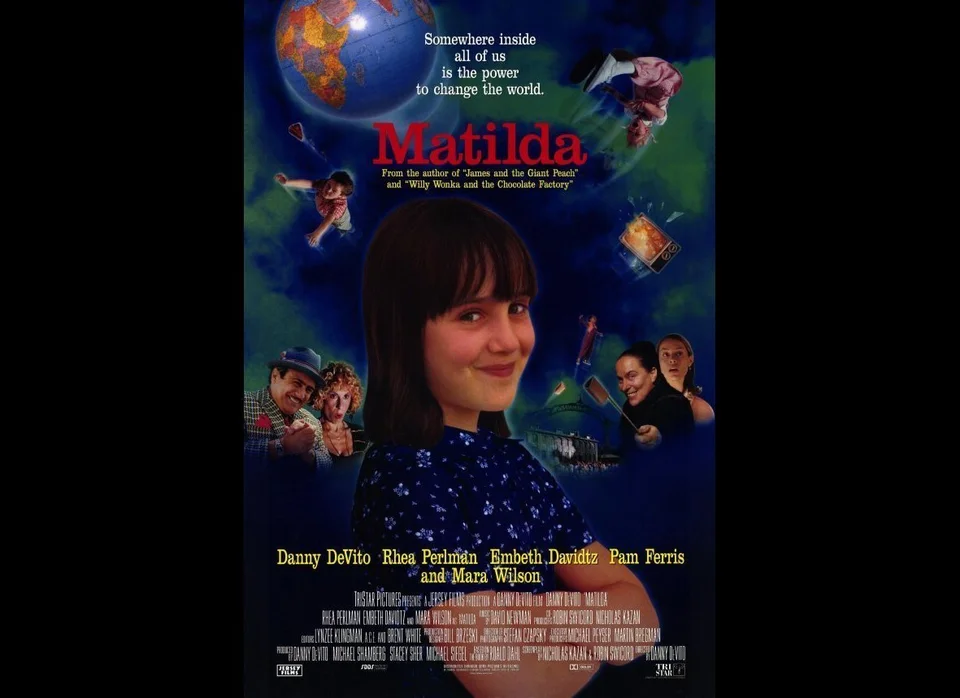Jeannette Walls begins her memoir with a scene from adulthood. While in a cab in New York City, Jeannette looks out the window and sees her mother dumpster diving. She ducks down in her seat to avoid being recognized, but later invites her mother to lunch to talk about how she can help. Mom insists that she and Dad like being homeless and admonishes Jeannette for being ashamed of her own family. From here, Jeannette’s narration goes back in time to her very first memory. At three years old, Jeannette lives in a trailer park with Mom, Dad, her older sister Lori, and her little brother Brian. Jeannette’s tutu catches fire while she cooks hot dogs over a stove, and her mother rushes her to the hospital for an emergency skin graft. After six weeks in the hospital, Dad smuggles her out without paying the bill. Back at home, Jeannette goes back to cooking unsupervised and starts playing with matches.
- The Glass Castle Common Sense Media
- The Glass Castle Parents
- Glass Castle Review
- The Glass Castle Book Common Sense Media
- Glass Parents Guide
One night, Dad makes the family pack all their belongings into the family car and move towns in the middle of the night, a routine he calls “doing the skedaddle.” Over the next several years, the Wallses do the skedaddle dozens of times, moving all over to stay ahead of debt collectors and law enforcement. They spend a month or two in larger cities like Las Vegas and San Francisco, where Dad can make quick money by gambling. Most of the time, however, the Wallses live in isolated desert mining towns, where Mom and Dad teach their children reading and math, as well as specialized survival skills. Dad drinks often and struggles to keep a job for long, but he promises his family that their nomadic lifestyle is temporary. He promises to find gold and build his family the Glass Castle, a large, self-sustaining home made out of glass.
When Jeannette is in first grade, Mom gives birth to another baby, Maureen. Dad moves the family to Battle Mountain, Nevada, where he works as an electrician. The family enjoys six months of relative stability until Dad loses his job. After an explosive argument, Mom gets a teaching job. Dad confiscates most of her paycheck, and the family continues to go hungry. Their time in Nevada comes to an end when Billy Deel, a delinquent neighbor boy whose advances Jeannette rejected, comes to the Walls residence and opens fire with his BB gun. Jeannette returns fire with Dad’s pistol. She misses him on purpose, but the police get involved. The family flees to Phoenix. On the way to Phoenix, Jeannette learns that Grandma Smith has passed, leaving Mom a large sum of money and a house. They move into the massive house, and Dad gets a job as an electrician. For about a year, the kids enjoy regular meals, their own bicycles, and public schooling. Unfortunately, Dad loses his job, and his alcoholism reaches crushing lows. The family is once again destitute. Mom decides it’s time to move to Dad’s hometown of Welch, West Virginia.
Common Sense Media. Narrated by Toni Morrison The Glass Castle by Jeannette Walls Jeannette Walls grew up with parents whose stubborn nonconformity. You can read the full review where it was originally posted online. This review of The Glass Castle (2017) was written by Jeffrey M. Anderson and published by Common Sense Media on 10 August 2017. The Glass Castle has generally received positive reviews.
When the Wallses arrive in Welch, they stay with Jeannette’s paternal grandmother, Erma. Erma is a bitter, unwelcoming host, and most people in Welch regard the Wallses as self-important outsiders. When Mom and Dad leave for an extended road trip to Phoenix, Erma molests Brian. Jeannette and Lori confront her, but Erma retaliates violently. Dad takes Erma’s side when he returns, but Erma evicts the family. The Wallses buy a small, rotting house with no running water or indoor plumbing. Dad admits that the conditions are not ideal, but promises to use the land to begin construction on the Glass Castle. To help Dad get started on the Glass Castle, Brian and Jeannette dig a large hole for the foundation, but the family soon fills it with garbage. To survive, the kids start dumpster diving and stealing food from their classmates and neighbors. Desperate, Jeannette begs Mom to divorce Dad so they can go on welfare, but Mom refuses.
Directed by Destin Daniel Cretton. With Brie Larson, Woody Harrelson, Naomi Watts, Ella Anderson. A young girl comes of age in a dysfunctional family of nonconformist nomads with a mother who's an eccentric artist and an alcoholic father who would stir the children's imagination with hope as a distraction to their poverty.

When the Wallses get a visit from child protective services, Mom finds a teaching job. The money could solve their problems, but Dad’s extensive drinking once again drains their funds, and the family continues to go hungry. The following summer, Mom goes to Charleston for several weeks to renew her teaching license. Left in control of the family finances, Jeannette finds that she, too, gives into Dad’s demands for more money. When Mom returns from Charleston, she announces that she will quit her job and devote all her time to art. Jeannette finally confronts Mom and Dad about their selfishness, but Dad whips her in retaliation. Appalled, Jeannette and Lori plan to move to New York City as soon as possible. Jeannette, Lori, and Brian find jobs around Welch and save all their money for almost a year, but Dad steals the money just months before Lori’s planned departure. In the end, Jeannette secures Lori a summer babysitting job that includes a bus ticket to New York City as payment.
Lori loves life in New York City, where she works in a restaurant and lives in a women’s hostel. Jeannette moves to the city a year later and finishes high school there, interning at a Brooklyn newspaper for credit. Brian follows a year later. Jeannette starts college at Barnard, putting herself through with grants, loans, and savings from odd jobs. Maureen moves in with Lori at age twelve. Dad accuses Lori of stealing his children, and he and Mom move to New York City three years later. After being kicked out of several apartments, Mom and Dad first live on the streets, and then become squatters. At this point, Jeannette has married and works at a prestigious magazine. Lori is an artist, and Brian is a police officer. Maureen drops out of college and moves in with Mom and Dad. Maureen tries to stab Mom, and must spend a year in a psychiatric hospital. The family drifts apart, and a year later Dad dies of a heart attack. Five years after Dad’s death, Jeannette and her second husband, John, host the family for Thanksgiving, though without Maureen. They toast to Dad’s life.
Yalda T. Uhls and Maryam Kia-Keating are sisters, psychologists, and, most importantly, moms. Uhls is a senior scientific researcher at UCLA and regional director of the non-profit Common Sense Media. Kia-Keating is an associate professor of clinical psychology at UC Santa Barbara. This column appeared Jan. 8 on Zócalo Public Square, as part of Thinking L.A., Zócalo’s partnership with UCLA.
When the animated film Frozen was released in 2014, no one expected it to become a worldwide juggernaut. Frozen, which earned more than $1.2 billion at the box office, is not only the first “princess” movie to make the list of top 10 grossing animated films, but even more astonishingly, the number-one animated film of all time. Talk about shattering the glass ceiling, or in this case, the glass slipper.
Little girls have long been drawn to princesses, a trend documented by Peggy Orenstein in 2011’s Cinderella Ate My Daughter: Dispatches from the Front Lines of the New Girlie-Girl Culture. In the last few decades, animated heroines have become increasingly diverse and self-reliant, which has broadened their appeal. In the 1990s, Disney introduced Jasmine and Mulan, offering to their princess franchise and its impressionable young audiences new cultural backgrounds and brown eyes. And in 2009, with the Princess and the Frog, Disney finally created an American princess who just happened to be black. In all of these stories, the prince is still present, but the princess is often just as tough. Nevertheless, some aspects of the princess franchises never seem to change: Children remain enraptured not just by the movies but by the costumes and the toys, too.
But what is it that makes Frozen so much more appealing than previous princess films — and why does it enrapture young children in particular? As psychologists (who happen to be sisters just like the heroines in the film) and the mothers of princess-loving daughters, we decided to consider this question.
First, a preschooler’s emotional world is reminiscent of Frozen heroine Elsa’s internal struggle: Her emotions are strong, passionate, and seem uncontrollable. Preschoolers too, are driven by their impulses. When Elsa laments that she’s afraid that there’s “no escape from the storm inside of me,” it resonates with young children (and perhaps their patience-tested parents, as well).
The Glass Castle Common Sense Media


Secondly, our imaginations are at their greatest when we are preschoolers; the world seems a wondrous place filled with the possibility of excitement and adventure. Children respond to stories that employ magical realism, so Elsa — as a superhero with what one of our daughters (Maryam’s) and her friends call “ice powers” (the ability to create a whole castle of snow and ice using only her fingers) — has special appeal. Perhaps because they are so in awe of her magic and power, children are less likely to get caught up in Elsa’s experience of isolation and desperation when she is locked away in her room as a girl and hides herself in a remote castle as a woman.
But with the allure of magic and the sense that anything is possible comes a high potential for terror. Maryam’s daughter particularly liked that there isn’t a witch in Frozen. Though she adores other Disney princess movies, the witch-like characters (like Mother Gothel in Rapunzel) are all too real. The scary parts in Frozen are minimal and temporary, and the villain is an ordinary guy who sings a catchy love song.
The Glass Castle Parents

Glass Castle Review
Third, Elsa has a genuine connection with her sister, Anna. Despite Elsa’s repeated rebuffs to Anna’s attempts to develop a friendship throughout most of the movie, their bond underscores dedication to family above all. Preschoolers are deeply entrenched in their families and tend to demonstrate a strong in-group attachment, meaning that they favor members within their social circle. Even when Frozen viewers are rooting for Anna to form a relationship with her love interest Kristoff, the love between the sisters is much more appealing. The heroines of Frozen are authentic and real, and no longer solely focused on finding a prince. They preach sisterly love and girl power.
Finally, the sing-along music seals the deal. Maryam’s 4-year-old daughter and her friends love to sing the anthem “Let It Go,” wagging their fingers at each other: “Be the good girl you always have to be!” They stomp in unison, pretending to be Elsa stomping on the ice to create her castle. Even Maryam’s 1-year-old son gets into the act, mimicking their behavior.

When asked what she thought the song was about, Maryam’s daughter smiled and put it succinctly: “It’s about Elsa being happy and free, and nobody bothering her.”
The Glass Castle Book Common Sense Media
So there it is, the crux of the matter: a universally appealing desire to be happy and free.
Glass Parents Guide
Perhaps understanding the perspective of a preschooler can help us appreciate some of what draws us all to this movie: We all feel internal struggles with our impulses. None of us really wants a (too) scary villain. Most of us are pretty loyal to our families, despite their eccentricities and the emotional challenges that we face at times. And all of us want to be happy and free.
